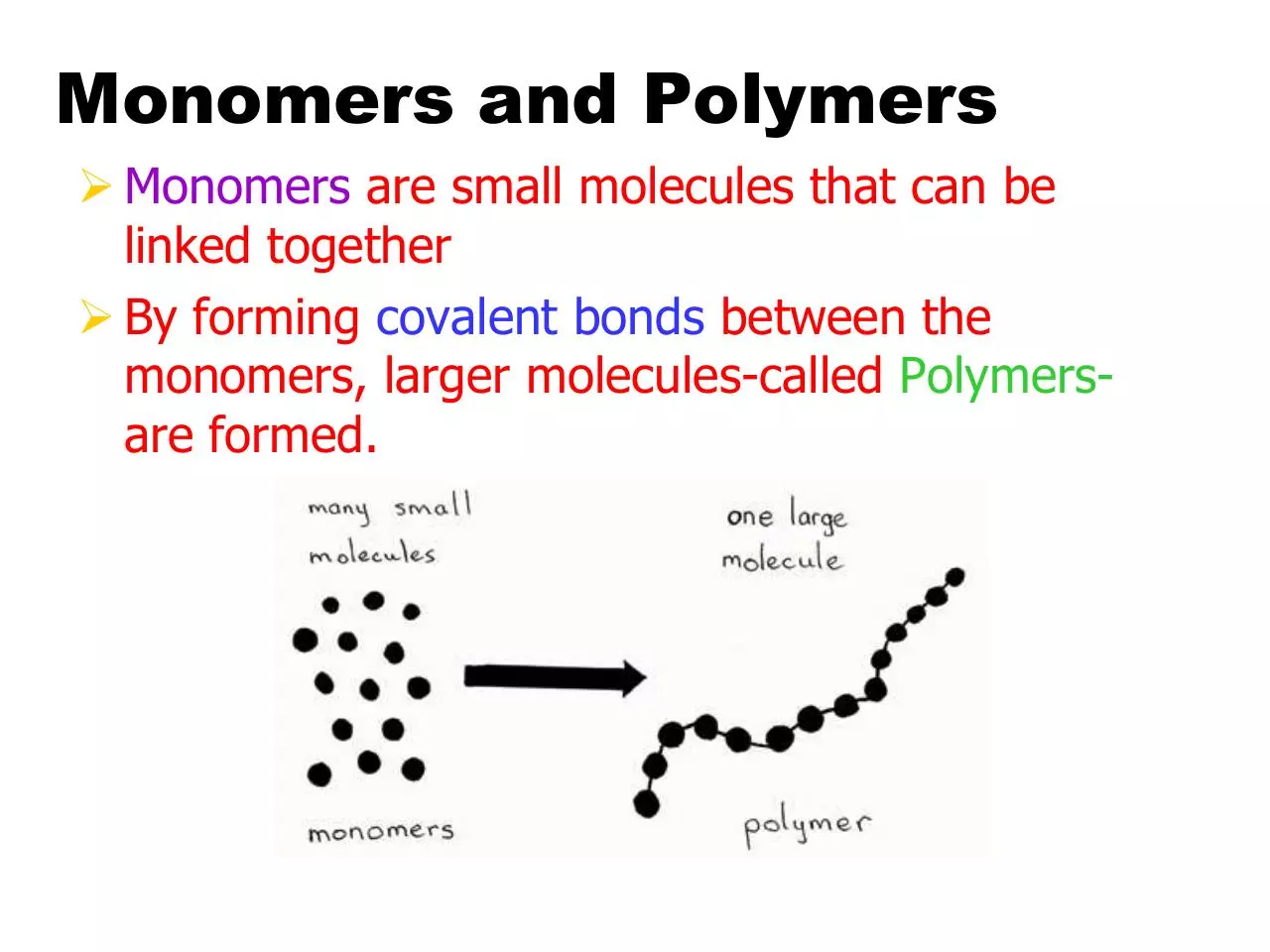5 chemistry part II (PDF)
File information
Title: The Chemistry of Life
Author: Edward Terzian, Jr.
This PDF 1.5 document has been generated by Microsoft® Office PowerPoint® 2007, and has been sent on pdf-archive.com on 02/09/2011 at 02:59, from IP address 24.172.x.x.
The current document download page has been viewed 1023 times.
File size: 796.99 KB (21 pages).
Privacy: public file





File preview
The Chemistry
of
Life
Part II
Biological Molecules
Carbon is the most important
element to living things
Why is the carbon backbone
present in all of the biological
molecules?
Carbon
Has 4 electrons in its outer energy level
Can form covalent bonds with up to 4 other atoms
Can form chains or rings with single, double, or
triple bonds
Monomers and Polymers
Monomers are small molecules that can be
linked together
By forming covalent bonds between the
monomers, larger molecules-called Polymersare formed.
4 Types of Monomers
1. Fatty Acids
Long chains of Carbon,
Hydrogen, with a few
Oxygen atoms.
Can be linked together with covalent bonds
to form Lipids
Do not dissolve easily in water
Examples of Lipids
Oil made by plants for energy
storage
Fat made by animals for energy storage,
protection and insulation.
Phospholipids found in the membranes of all
cells
4 Types of Monomers (cont.)
2. Sugars- monosaccharides
Short chains or rings
Carbon, Hydrogen and Oxygen in the ratio
of (CH2O)n Ex. Glucose C6H12O6
Can be linked together with covalent bonds
to form a Disaccharide (2 sugars) or
Polysaccharide (many sugars) aka
Carbohydrate
Examples of Carbohydrates
Starch in plants for energy
storage
Glycogen in animal muscle and
liver for energy storage
Cellulose provides support for
plant cell walls
Examples of Carbohydrates
Chitin for support and protection
in the exoskeleton of insects and
crustaceans
Small sugars such as glucose,
sucrose, fructose and lactose for
energy storage
Download 5 chemistry part II
5 chemistry part II.pdf (PDF, 796.99 KB)
Download PDF
Share this file on social networks
Link to this page
Permanent link
Use the permanent link to the download page to share your document on Facebook, Twitter, LinkedIn, or directly with a contact by e-Mail, Messenger, Whatsapp, Line..
Short link
Use the short link to share your document on Twitter or by text message (SMS)
HTML Code
Copy the following HTML code to share your document on a Website or Blog
QR Code to this page

This file has been shared publicly by a user of PDF Archive.
Document ID: 0000033421.